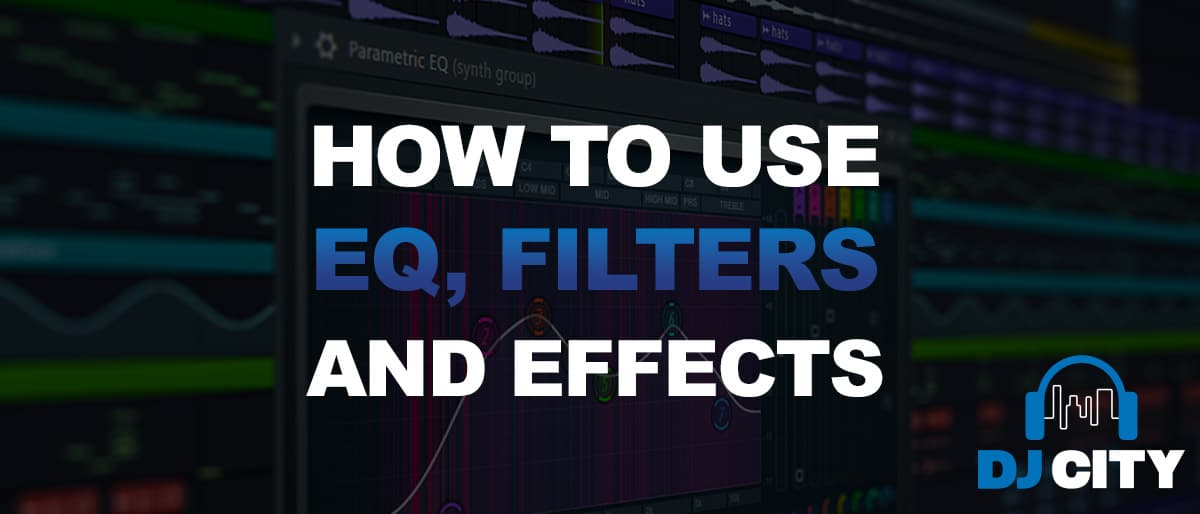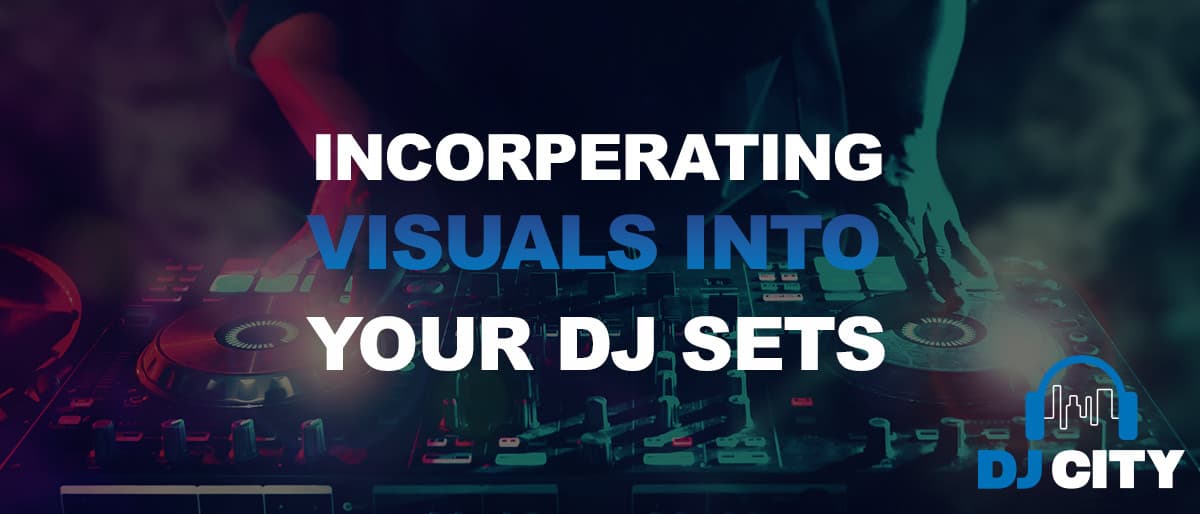
How to Use EQ, Filters & Effects for a Professional Mix
What is EQ?
When putting together a professional mix and creating music, there are many different effects and filters that a DJ can use.
EQ, which stands for equalizer, is one of those tools. In summary, the EQ filters music by allowing you to adjust the volume of a particular frequency within the audio track. In other words, if there is one element to your track that you want to highlight or ‘unhighlight’, the EQ filter allows you to do just that.
In conjunction with other effects and filters, you can also do a lot more than just play with the frequency volume.
In this article, we’ll introduce you to how to use auto EQ, dynamic EQ and other filters and effects to create wonderful and original music.
Understanding the Frequency Spectrum
The human ear can register sound along a specific spectrum of frequency (up to 20 kilohertz) but even frequencies beyond that can have an impact. When you’re using filter music effects, you need to bear in mind the different ranges and how they will affect your audience’s experience.
Note: The unit Hertz (Hz) is used to measure frequency by indicating the number of cycles per second.
To break down the general frequency ranges, consider the following.
- For a sub-bass effect, the frequency range is 20Hz to 60Hz.
- For a bass sound, the frequency range is 60Hz to 200Hz.
- The lower mids ranges from 200Hz to 600Hz.
- Mids ranges from 600Hz all the way to 3kHz (i.e., kilohertz or 3,000Hz).
- The upper mids are 3kHz to 8kHz.
- Highs are from 8kHz to 20kHz.
Music Filters
During your music mix, you may want to cut out any frequency above or below a certain level. That’s where the high-pass and the low-pass filters come in.
High-Pass filter
The high-pass filter ensures that only the frequency above a set amount can be heard. Everything lower than that is going to be filtered out.
Low-Pass Filter
Conversely, the low-pass filter ensures that only the frequency below the set standard is let through with everything above it filtered out.
Filter Bands
When you’re playing around with filters and other music effects for the first time, we advise you to keep it simple and straightforward. As you start to understand how to use dynamic EQ and filters more and more, you can start using ‘band filters’ which are a further way to control and boost certain frequency ranges.
EQ, Effects and Filters in Your Music
Knowing how to use EQ and filters is one thing, but knowing when to use it can be just as important.
There can be many potential reasons why you might want to play around with these effects on your next track. To help you understand their utility, here are some of the most common examples of how and when to use EQ.
1. Remove the Elements You Don’t Want
For most artists, and especially DJs starting off, this is the most common reason to engage in filters and EQ. If there are elements to your track that you do not want heard or need to remove, using EQ can be an effective approach.
EQ helps to ‘clean up’ your music and improve the overall sound. In other words, by stripping out the frequencies you don’t want heard you’re making room, so to speak, for the audio you actually want heard to come through.
Remember: The narrower your filter band the better when it comes to removing frequencies.
2. Emphasise the Elements You Do Want
The flip side to the first approach is to use EQ and filters not to decrease certain elements but to emphasise frequencies you want to highlight. Enhancing the bass or upper mids can bring the elements you want to the fore and help you shape a track that sounds best.
Remember that EQ is not about introducing new sounds or elements to your mix. It can’t do that after all. It’s focused on emphasising the frequencies that already exist in the track over other frequencies.
3. Subtle Effect Manipulation
Filters used sparsely are by no means less effective, necessarily. You might want to simply drop the bass a few hundred hertz or highlight a vocal section.
EQ and filters afford you a lot of creative opportunity to mix and match, and play around with your track to create the best music you can.
4. Add Something Different
Bearing in mind that we’re not adding a musical element, EQ can be effectively used to add something qualitatively different to your mix. The more interesting, unique and new your track is the more it’s likely to make an impression with your target audience.
During your mixing stage, we highly recommend you play around with different strategies. Try using EQ to highlight certain frequencies in specific sections of your track, such as during phrases you want emphasises.
You’ll be pleasantly surprised with just how impactful even a refined and limited EQ filter can be.
5. Spacing Out Your Mix
Creating space in your mixes and audio tracks is made a whole lot easier with EQ. What do we mean by space? Basically, it’s not boosting two different parts of the track at the same frequency level.
Also called “space allocation”, by emphasising a specific frequency range for a specific section and cutting out that range for the other elements or instruments in that section, you avoid overcrowding of frequencies and sounds.
This achieves two things: (1) It sounds better; and (2) It allows your highlighted part the ‘space’ to truly come into its own and sound as good as possible.
Got more filter music questions? Contact DJ City!
The team here at DJ City aren’t just leading experts in all things DJ hardware and software. We’re music creators ourselves and know all about how to use EQ, filters and other effects to produce professional sounding and appealing mixes.
If you’re looking for more advice about auto EQ, high pass filters, dynamic EQ or just about anything else, make sure to reach out to us today!







